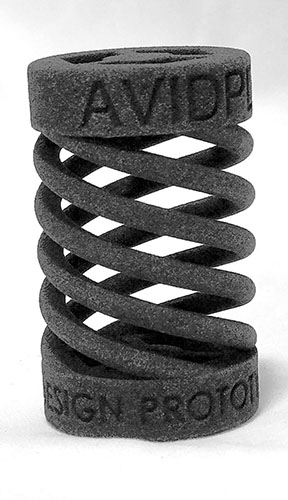3D printing, also known as additive manufacturing (AM), has revolutionized the way products are designed and manufactured across various industries. Its low-cost, fast building process and ability to create complex shapes have made it increasingly popular for rapid prototyping and on-demand manufacturing. In this article, we will explore how 3D printing is transforming product design and production, and how Avid Product Development is leveraging this technology to offer a range of cutting-edge solutions.
Rapid prototyping
One of the most significant advantages of 3D printing is its ability to accelerate the prototyping phase. Traditional manufacturing methods can be time-consuming and costly, often requiring the creation of molds or tooling. With 3D printing, designers and engineers can quickly transform digital designs into physical prototypes. This rapid prototyping process allows for faster iteration and testing, reducing the time it takes to bring new ideas to life.
Avid Product Development’s use of HP Multi Jet Fusion (MJF) and SLA technology enables the creation of accurate, detailed, and functional prototypes. The uniform surface finish and imperceptible layer lines ensure that these prototypes closely resemble the final product, making it easier to evaluate and refine designs before moving to production.
On-demand manufacturing
In addition to prototyping, 3D printing has opened up new possibilities for on-demand manufacturing. With traditional methods, producing custom or low-volume parts can be expensive and impractical. However, 3D printing eliminates the need for costly tooling, making it more feasible to produce small batches of customized parts or end-use products.
Avid Product Development leverages ORIGIN P3 and SLS technology to offer a diverse portfolio of materials for end-use part production and realistic prototypes. The consistency and precision of photopolymerization and selective laser sintering provide reliable part quality, making 3D printing a viable solution for small-scale production runs.
Material diversity
One of the key strengths of 3D printing is its versatility in material selection. Different 3D printing technologies can work with a wide range of materials, including polymers, metals, ceramics, and composites. This diversity of materials allows designers and engineers to choose the most suitable material for specific applications, considering factors such as strength, flexibility, heat resistance, and chemical compatibility.
Avid Product Development’s use of FDM and MJF technology offers a large variety of materials and colors. Fused Deposition Modeling (FDM) is popular for rapid prototyping and tooling, while HP Multi Jet Fusion (MJF) provides an excellent surface finish and mechanical properties. The ability to select the right material for each project ensures that the final parts meet the desired performance requirements.
Avid Product Development 3D printing
3D printing, or additive manufacturing, has become a game-changer in product design and production. Its ability to accelerate prototyping, enable on-demand manufacturing, and offer a diverse range of materials has transformed the way products are developed and brought to market. Avid Product Development is at the forefront of this technology, leveraging cutting-edge 3D printing solutions to deliver commercial-grade prototypes and quality production parts.
As the demand for faster innovation and more personalized products continues to grow, 3D printing will play an increasingly vital role in various industries. Whether for rapid prototyping or small-scale production, the versatility and efficiency of 3D printing ensure that it remains a powerful tool for transforming ideas into reality. Embracing this technology can give companies a competitive edge, as they leverage its capabilities to stay ahead in the ever-evolving world of product design and manufacturing.

